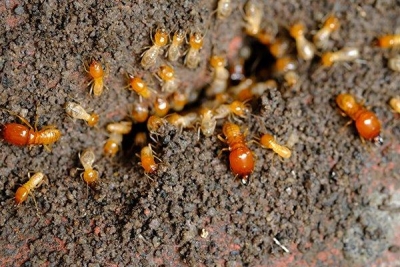Which is the strongest insect on earth?
A species of horned dung beetle called Onthophagus taurus is the strongest insect on Earth with its capacity to pull over 1140 times its body weight. According to scientists, it evolved such strength as this is the deciding factor in males’ competition over females.
The beetles aren't the dung-ball-carrying variety, and instead the females bury most of the fecal material (with a little help from males) from, say, cow droppings.
The females build little tunnels where they use the dung to lay their eggs in. It's in this tunnel where mating, and the pre-mating fights between waiting males, takes place. But not all males are equipped for battle, with some sporting horns and others hornless. The no-horn beetles instead wait at the tunnel's entrance, sometimes hiding out in self-built side tunnels, and sneak in to mate before getting caught by a horned male.
The horned males, on the other hand, duke it out head-to-head.
Credit : Live Science
Picture Credit : Google
 It is the African mound-building termite queen that lives longer than any other insect we know of. These termites are known for building spectacular mounds that can reach five metres or higher. Some termite queens can live for over 60 years. According to some scientists, they may even live up to a hundred years. What does the termite queen do? She constantly lays eggs, between 20,000 and 30,000 every day.
It is the African mound-building termite queen that lives longer than any other insect we know of. These termites are known for building spectacular mounds that can reach five metres or higher. Some termite queens can live for over 60 years. According to some scientists, they may even live up to a hundred years. What does the termite queen do? She constantly lays eggs, between 20,000 and 30,000 every day.